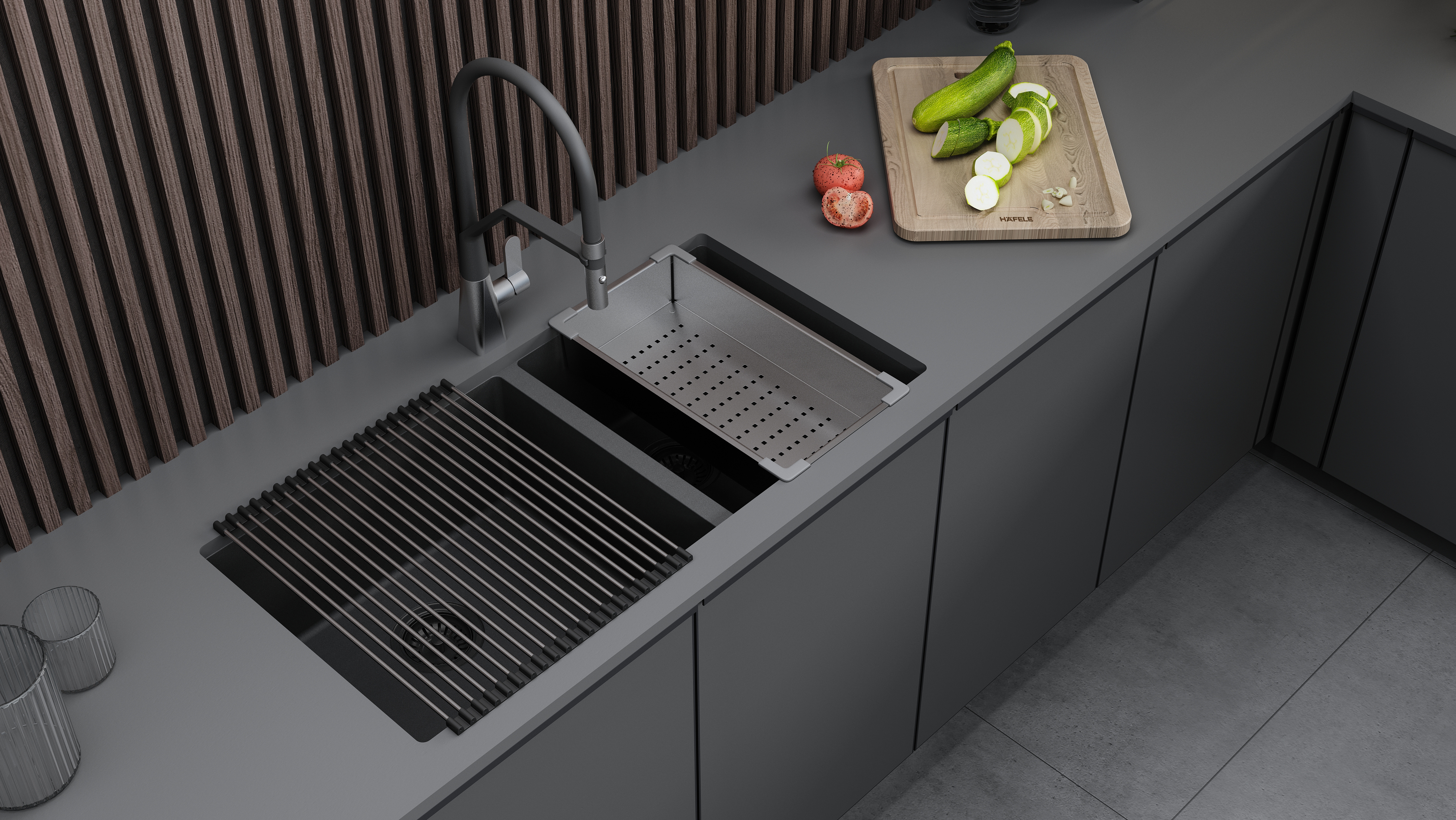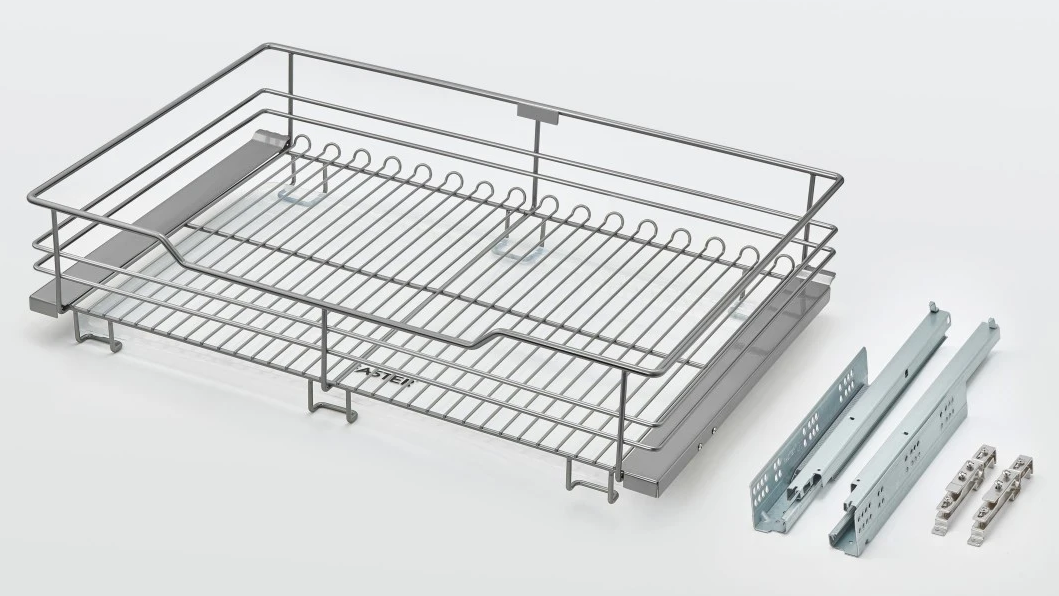Views: 0 Author: Site Editor Publish Time: 2025-06-24 Origin: Site








Replacing akitchen sink can significantly enhance both the look and functionality of your kitchen. However, many homeowners are often concerned about the cost and effort involved in a full countertop replacement when they only want to swap out their sink. The good news is that it is possible to replace a kitchen sink without replacing the countertop, but this depends on several key factors. In this article, we’ll dive deep into the factors that can affect whether or not your countertop can stay intact while you replace your sink.

Replacing only the kitchen sink can save a significant amount of money compared to replacing the entire countertop. A countertop replacement involves not only the cost of the material but also labor costs associated with measuring, cutting, and installing the new surface. By opting to only replace the sink, you can save money on materials, labor, and the time involved in a larger remodel.
If you’re happy with the design and condition of your current countertop, it may not make sense to replace it just because you're upgrading your sink. Many countertops, such as granite or quartz, are built to last for decades, and if they’re still in good condition, you can retain their beauty while improving the functionality of your sink.
Replacing only the sink is also a more environmentally friendly option. By avoiding the need for a full countertop replacement, you're reducing the amount of waste generated from ripping out and discarding old countertops. This is a sustainable approach to updating your kitchen without unnecessarily adding to landfill waste.
If you're happy with the current layout of your kitchen, replacing the sink without replacing the countertop allows you to make improvements without having to alter everything. This is especially useful for homeowners who want to make their kitchen more functional without a full-scale remodel.
The size and shape of your new sink play a crucial role in determining whether you can replace it without altering your countertop. If you're replacing your sink with one of the same dimensions (width, depth, and shape), the process is much easier. The existing cutout in the countertop will accommodate the new sink, and no further modifications are required.
However, if you’re opting for a larger or smaller sink, you will need to adjust the countertop. A larger sink will require a bigger cutout in the countertop, while a smaller sink may leave gaps that affect the overall aesthetic and functionality. In both cases, modifications to the countertop will likely be needed.
There are several different sink installation types, and the type you choose impacts whether or not you can replace the sink without replacing the countertop:
Drop-In Sinks: These are the most straightforward to replace. Drop-in sinks rest on top of the countertop, with a lip that holds the sink in place. As long as the new sink is the same size, you can usually swap it out without needing to modify the countertop.
Undermount Sinks: These are installed beneath the countertop, giving a seamless look. Replacing an undermount sink is a bit more challenging because the adhesive used to secure the sink can make removal difficult. If you are replacing an undermount sink with the same size, the existing cutout will work, but if you want to change the size or style, countertop modifications may be needed.
Farmhouse Sinks: These large, deep sinks typically require more extensive modifications to the countertop. In many cases, replacing a farmhouse sink without replacing the countertop is not feasible unless the new sink is identical to the old one in size.
The material of your countertop plays a significant role in determining whether or not the sink replacement will affect the surface. Harder materials like granite, marble, and quartz are easier to cut and shape to accommodate a larger sink, making them ideal candidates for sink replacement. These materials are also durable, so they can withstand the removal process with minimal risk of damage.
On the other hand, countertops made from softer materials like laminate or older, fragile surfaces may crack or chip during sink removal or modification. If your countertop is in poor condition, it might be safer to replace it along with the sink to avoid causing irreversible damage.

Removing a sink without damaging the countertop requires careful attention to detail and the right tools. Here’s a step-by-step guide to help you safely remove your sink:
Turn Off the Water Supply: Always shut off the water supply to avoid leaks or flooding.
Disconnect Plumbing: Detach any plumbing and garbage disposal lines that are connected to the sink.
Use a Seven-Piece Multitool: This tool helps you gently pry the sink from the countertop without damaging the surface.
Insert Plastic Wedges: Start at the corner of the sink, inserting plastic wedges between the sink and countertop to break the adhesive seal.
Cut Through Caulking: Use a razor blade to cut through the caulking or silicone around the sink.
Remove the Sink: After loosening the sink with wedges and cutting through any adhesive, the sink should come off without causing any damage to the countertop.
When removing a sink, especially an undermount sink, you may encounter issues such as stubborn adhesive or clips that hold the sink in place. If you can't remove the sink without damaging the countertop, consult a professional plumber who can safely handle the job without causing any harm to your counter.
Finding a replacement sink that matches the dimensions of your current sink is one of the biggest challenges. Even a small difference in size can require modifications to the countertop. Therefore, it’s essential to measure your current sink and ensure that the replacement sink will fit the existing cutout.
Older or more fragile countertops can easily crack or chip when removing or replacing a sink. This is especially true for undermount sinks, which are often held in place with strong adhesive. If you’re worried about damaging your countertop, it might be worth considering a professional sink replacement service.
If you want to upgrade to a larger sink, modifying the countertop will be necessary. This can include cutting or polishing the edges to create the proper fit. If your countertop is made of durable material like granite or quartz, this process is manageable. However, some materials may not handle such modifications well, increasing the risk of damage.
Installing a drop-in sink is relatively easy compared to other types. Here’s how you can install it:
Place the sink into the existing cutout.
Secure the sink with clips or caulking, ensuring a tight fit.
Check for any gaps and fill them with silicone to prevent leaks.
Installing an undermount sink involves securing the sink beneath the countertop using adhesive. It’s important to clean the edges of the countertop and apply the adhesive properly to ensure the sink stays in place. For a secure installation, a professional may be required to handle the adhesive and ensure a clean bond.
While it’s possible to replace just the sink, there are times when replacing the countertop might be a better option:
Condition of the Countertop: If your countertop is cracked, stained, or made of outdated materials, upgrading both the sink and the countertop can provide a fresh look and add value to your kitchen.
Long-Term Investment: If you're planning to sell your home soon, upgrading both the sink and the countertop could boost the resale value of your kitchen.
Aesthetic Upgrade: If you want a complete kitchen makeover, replacing both the sink and countertop gives you a cohesive and updated design.
Hiring a plumber or contractor is often the best option for sink replacement, especially if you're dealing with an undermount or farmhouse sink. A professional will have the tools and experience to handle the removal and installation without causing damage.
While hiring a professional can be more expensive than a DIY approach, the peace of mind and quality work often outweigh the cost. A plumber will ensure the sink is installed correctly and securely, reducing the risk of leaks and other issues.
A professional plumber will know how to handle common kitchen sink problems and avoid damaging your countertop. This expertise can save you from costly repairs down the line.
Replacing a kitchen sink without replacing the countertop is entirely feasible, as long as you consider key factors like sink size, type, and the material of your countertop. If you're unsure, it's always best to consult a professional to avoid potential damage. By following the steps outlined, you can enjoy an updated sink while preserving your beautiful countertop, saving both time and money on a full remodel.
A: Replacing with a larger sink is possible if you are willing to make modifications to the countertop, but if it's a major size change, you may need professional help.
A: It involves cutting through the adhesive, using a multitool to loosen the sink, and carefully removing it without applying excessive force.
A: Yes, but it may require modifications, as the overmount cutout might not match the required size for an undermount sink.

